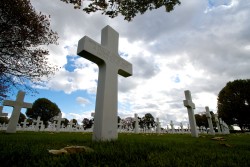
Posting this blog on the fifth of each May has become a tradition for me.
Liberation Day (also known as Freedom Day) for the Netherlands (Holland) was 5 May 1945. Canadian forces along with other Allied forces were able to obtain the surrender of German forces in the small Dutch town of Wageningen. This led to the complete German surrender and liberation of the country. The Netherlands was one of the last European countries to be liberated. Two days later in Reims, Generaloberst Alfred Jodl signed the document for the unconditional surrender of the German armies.
Thank You
We’d like to thank everyone who contacts us regarding our blogs. We get correspondence saying how much they like the blogs as well as the occasional e-mails pointing out errors. Both of these are very much appreciated. We’ve made friends with other authors from around the world as well as others who relay related stories and comments. We stay in contact with people who run non-profit organizations dedicated to preserving the memories of those who fought the Nazis. So, please keep those e-mails coming! It’s critical to NEVER FORGET.
Netherlands American Cemetery (Margraten)
There is a cemetery near Maastricht. It is the final resting spot for 8,301 American soldiers and a memorial for 1,722 men missing in action. They were the casualties of Operation Market Garden (17–25 September 1944) and other battles aimed at liberating Holland. Operation Market Garden was a failed Allied attempt to liberate Holland while on their march to Germany and Berlin. Other military cemeteries are located nearby for the British and Canadian men who did not survive the battle. Learn more about Operation Market Garden here. Read More May 5, 1945

